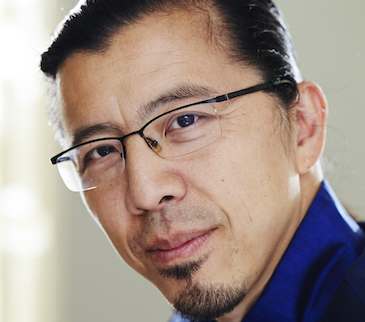When I sit down with a score of a new piece I am learning, my mental practice is divided into two basic parts. First, I analyze the music, either by Schenkerian or any other kind of standard harmonic analysis. Then the other part is meditation, which is the passive observation of what information is in my mind.
Mental Practice
If you have the first page of the Sonata you want to learn, how much time would you devote to studying the score mentally before you play the first notes? I would argue that it should be equal time. So if you’re playing the piano for an hour to work on this particular page, you should also spend an hour doing some kind of mental work without playing. Just note: If you are producing a sound from the piano or wiggling your fingers, you’re not doing efficient mental work. As soon as you start wiggling the fingers and producing music, you’re channeling all of your thinking into a single dimension: left to right, top to bottom at a steady pace. In fact, even if you hum or beat the music, you’re forcing things into that single dimension. There’s only one way to play and listen to music, which is at a steady pace going left to right, top to bottom. Mental work allows you to look at two places in the same score, go backwards, and jump around on the page. These are ways of perceiving the information that cannot be played, that cannot be heard, that cannot be imagined aurally or physically. It can only be imagined in the abstract mental concepts of structure and information.
Theoretical Analyses
The kind of analysis prompted by mental practicing is much broader than a strict harmonic analysis. When helping students analyze a musical piece, I begin by having them find similar passages in a piece. For example, say you have noticed that a descending scale is a main motive in the piece you are working on. In your mental practice, ask yourself analytical questions about the motive. Where does it reoccur? Where else do you use the same performance skills? Where else does the piece use that range of pitches? After all, when you start playing in that range, you evoke memories of that scale. Where is the motive in minor, major, different modes? What are the differences between the recurrences of the motive? Why is the first one in minor and the second one in a different mode? Why is this where it comes back? You’ve identified similarities (all these recurrences of the descending motive).
Notice the Details
Then you have to go very carefully through and ask yourself what are the differences between these items? Are the dynamics different? Are the articulations different? Are the actual note durations different? Are they different in terms of where they’re placed relative to the structure that’s associated with it? Understanding what’s the same is very important because that allows us to be more efficient in our learning. If there are four things that occur in different parts of the piece that are “the same,” we only have to learn one of them and we’ve learned four things. We’ve quadrupled our productivity. It’s very important for us to do this because we can’t efficiently learn note by note and learn a reflex for every note. However, the real challenge, once you grouped these four things together into one bucket, is to discover what is different about each of them. At that point you have a clear understanding of the evolution as the piece progresses.
You can read here how use emotions in memorization.

Frederic Chiu
Frederic Chiu is a piano faculty at Carnegie Mellon University and the Hartt School. He performs at major venues on five continents: Lincoln Center in New York, Kennedy Center in Washington, The Chatelet in Paris, the Mozarteum in Buenos Aires, as well as touring extensively in smaller and unusual venues. He collaborates with Classical music friends Joshua Bell, Pierre Amoyal and the St Lawrence String Quartet, as well as non-Classical friends like jazz pianist Bob James or storyteller David Gonzalez, to bring vivid live piano experiences to all audiences.
Frederic Chiu has recorded the most extensive complete piano works of Prokofiev, and his personal relationship with the Prokofiev family has made him a world-recognized advocate of the composer. Across 28 albums, he has recorded works of Chopin, Liszt, Ravel, Mendelssohn, Brahms, Rossini and Grieg, and most recently the Beethoven/Liszt Symphonies V and VII. “Hymns and Dervishes,” music of Gurdjieff/de Hartmann, Distant Voices: Music of Claude Debussy & Gao Ping, and Schubert’s Fantasy for Violin and Piano demonstrate his wide legacy in recording.



Comments are closed.